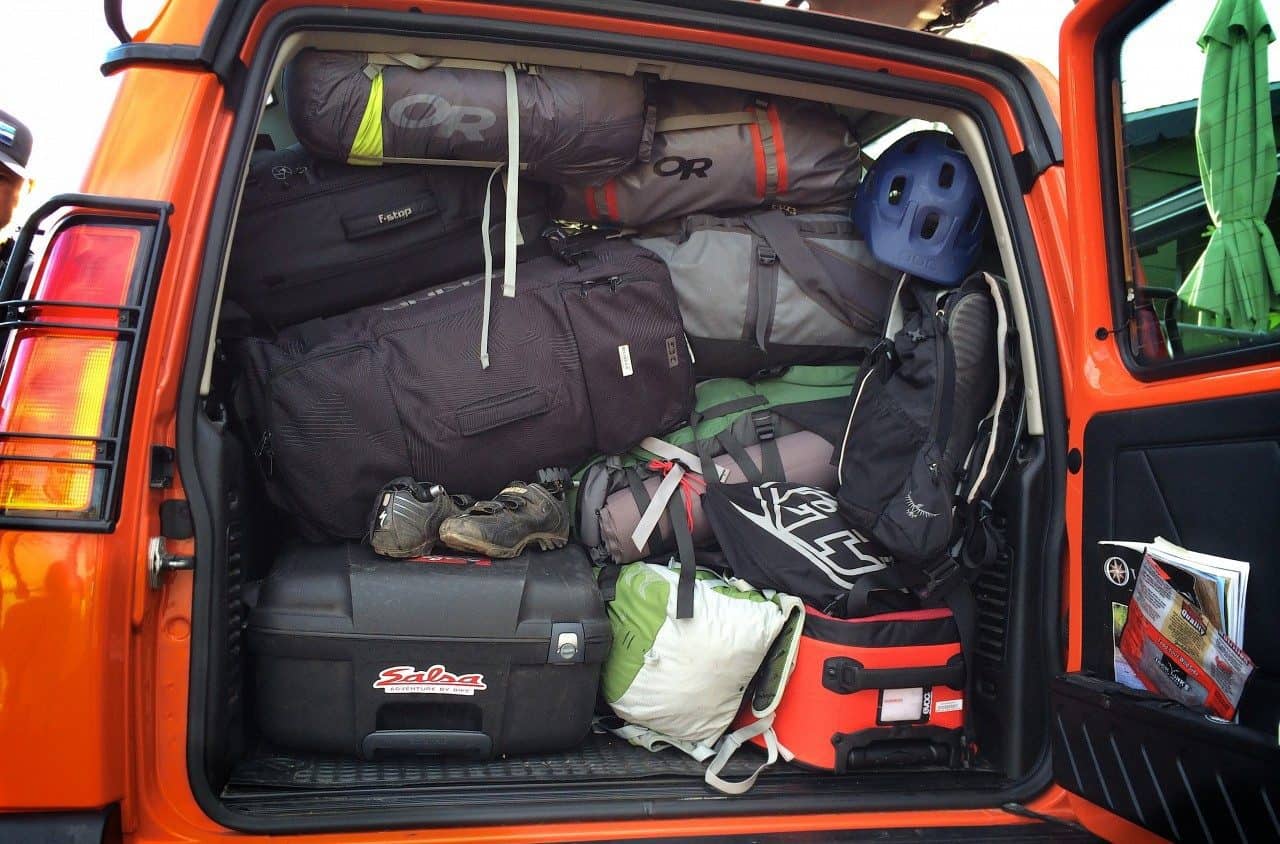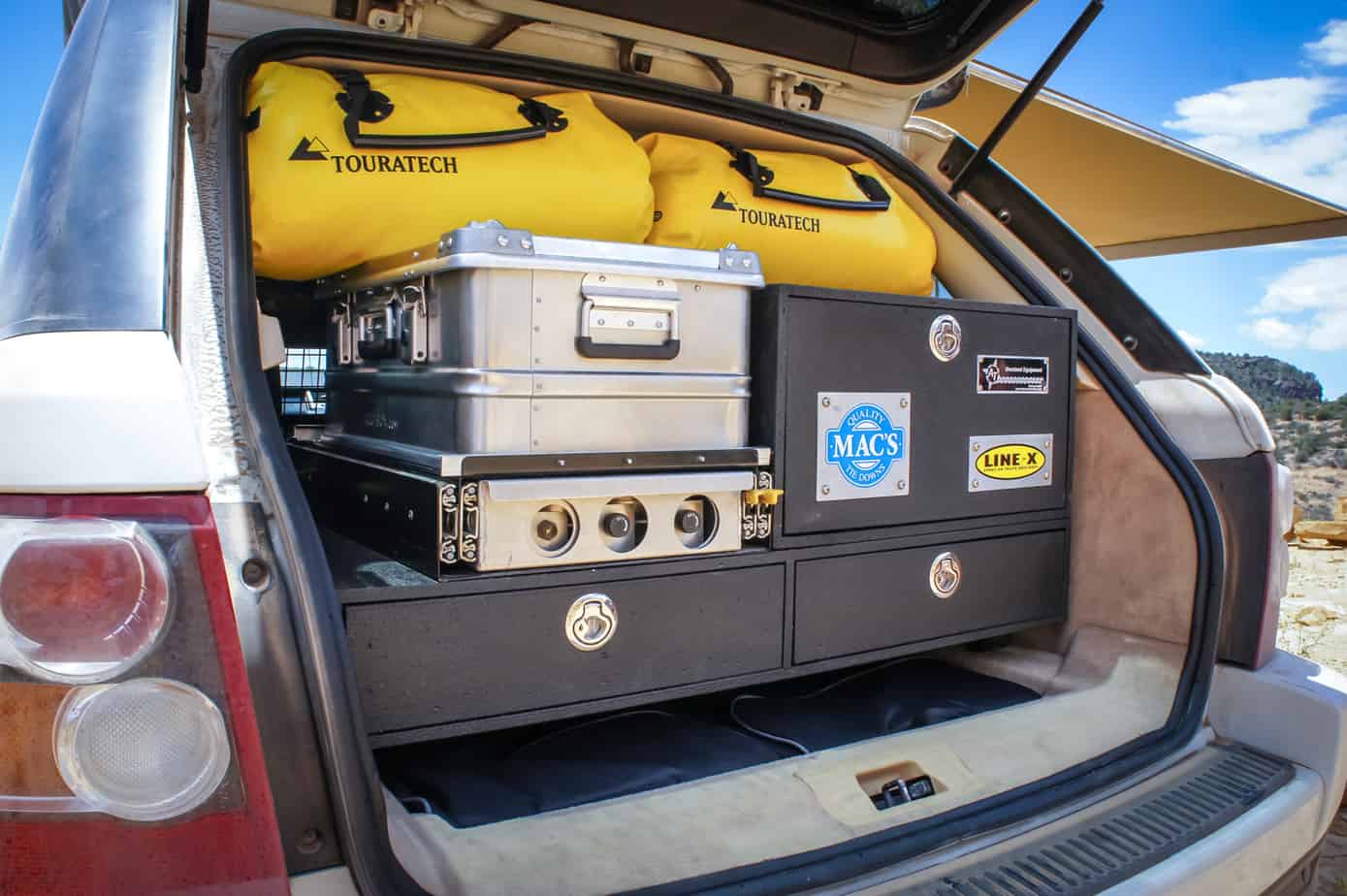With the beginning of the new year, you’re bound to hear plenty of talk concerning resolutions. People will be hitting the gyms, kicking bad habits, and posting lists of goals and dreams on their refrigerator doors. We think this season of positive change is a beautiful thing, which is why we’ve decided to join in the spirit of self-improvement by giving a little twist to some of the more popular resolutions out there. What’s the twist you ask? Well, the goals you’ll find below aren’t for you, but for your truck. We hope you enjoy them, and that they make overlanding a safer and more enjoyable experience in 2018.
1. Lose Weight
No, not you, your vehicle. Whether it’s exceeding the gross vehicle weight rating (GVWR), gross axle weight rating (GAWR), or tongue weight or towing capacity, many overlanders have a serious weight issue. This can lead to premature wear of components, unsafe handling characteristics, and a multitude of other problems that pose a serious danger to you and others. Here are a few suggestions on how to identify and fix these issues before they get worse.
Step 1– Before you load up for your next trip, do a little research on your vehicle’s capacities, and list them out on a sheet of paper. (You can usually find them on the driver’s door sill.) If you’re towing a trailer, try to understand the basics of these capacities and proper loading by reading the article here. Next, take a drive to your local truck stop and hop on their scales with a full tank of fuel and all of your gear loaded in. This will reveal your total weight, as well as the load distribution on both the front and rear axles. Now add in your own weight, as well as those of your passengers and see where things fall.
Step 2– Take a look at your camping gear. Are there items in there that never seem to be used? Maybe that cast iron pie maker your aunt Lisa gave you last winter? Time to trim the fat.
- Put those items in a separate box, duct tape it shut, and bring it on your next trip.
- If you need something from that box, use it and put it back in your normal kit.
- When you return home, get rid of everything that stayed in the duct tape box unused.
- You have an empty box, yay! Now refill that box with anything else you didn’t use on the last trip, and repeat the process until you’re only carrying what you use every time.
- Note: Everyone will probably keep a few items they may not use every trip, but you get the idea.
Step 3– If you’re still overweight, it might be time to look at what equipment you’re using. Consider swapping that Dutch oven for a lighter pot, or exchanging those heavy metal camp chairs and cots for some lighter variants. This can be a painful and admittedly expensive process that is often unnecessary if you’ve already reduced your gear, but it can do wonders for those willing to go the extra mile for a lightweight setup.
Check out the Minimalist’s Guide to Overlanding here.


2. Pay Closer Attention to Your Health
When was the last time you pulled that engine oil dipstick out or checked your transmission fluid? Have you crawled under your vehicle and inspected the shocks, springs, drive shafts, and steering components lately? If the answer is no, then pay attention. Regular inspections and evaluations of your vehicle can save you a fortune in maintenance, and more importantly, keep you from becoming stranded on the trail. Try to get into the following habits in 2018.

The fuel stop inspection– Check your oil levels every time you fill up your vehicle with fuel. Do a quick visual inspection of the engine bay at the same time and see if any other fluids like coolant, wiper fluid, or power steering fluid are low. A general look takes only a few moments and can save you from unwelcome surprises.
The big trip inspection– If you haven’t established a pre-trip checklist, it’s about time to do so. This thorough evaluation should be completed before and after each trip and requires you to physically touch many of the vital components to ensure they’re functioning properly. Things like your shocks and springs, drive shafts, battery cables, tire pressure and condition, recovery points, lights, belts, and other key components should be on this list.
The yearly checkup – For those who aren’t mechanically inclined, it’s a good idea to have a mechanic do a thorough evaluation of your vehicle at least once a year. This can help you to pick up on things you would have otherwise missed, and ensure you have a solid grasp on your four-wheel drive’s condition going into the new year. Even if you decide the vehicle needs nothing at that time, you can understand what might need attention soon, and drive confidently knowing your truck is ready for the road ahead.
The maintenance log – Keeping a record of your vehicle can help you to define patterns, identify issues, and solve problems before they become serious. They can also help you during resale, and give mechanics insights into your vehicle’s past. If you have the time and patience to keep a thorough log of every change, issue, and fix that would be great, but many people don’t. At a minimum, we’d recommend keeping a small notebook like a Field-Notes in your glove box with a pen. If a new noise or strange issue arises, jot it down with the conditions it occurred under and mileage of your vehicle so you can remember it later on. It might just save you from becoming stranded one day.
3. Get Organized
It’s best to keep things organized in every aspect of your life, but especially in your four-wheel drive. Besides the obvious aggravation of clutter shifting around inside the truck, loose bags and gear can pose a serious risk to you and others. For starters, unsecured cargo can fly around the cabin and injure passengers in the event of an accident, rollover, or even unexpected bump off road. It also makes important items harder to locate.

For example, an expedited recovery may be necessary due to rising waters or a precarious position near a drop-off. If you can’t locate the right strap or shackle, things may end poorly. Even more risky, a messy interior could make it difficult to find a medical kit or fire extinguisher in the event of an emergency. Whether you choose to solve this issue with a drawer system, new cargo tie downs, or simply a few large bags and ratchet straps, organizing your four-wheel drive should be at the top of your list for 2018.
4. Reduce Stress
While you can’t buy your truck a squishy ball or take it to yoga classes, there are some things you can do to help it eliminate stress this coming year.
- Start by reducing weight as we mentioned above. If you’ve already done that, take a look at the angles and tolerances of your steering and driveline components. Have you inadvertently altered them through modifications, or accidentally increased the loads they’re forced to handle? If so, do some research on how to alleviate those issues. Oftentimes, some new brackets or components can bring things back to stock tolerances.
- Next, help your truck with some breathing exercises. Specifically, a clean air filter. If you spend a lot of time in the dust and dirt, a raised air intake could also help your truck maintain a fresh air supply while on the road.

- If you’re considering larger tires, think about if the increased stress on the driveline is worth it. If you already have larger tires, remember that new gears could help alleviate that stress.
- Most importantly, EVALUATE YOUR DRIVING HABITS. The method in which you operate your vehicle can be the biggest source of stress on components. Read up on proper driving techniques, and if possible, take training classes that focus on the overland style of vehicle operation. Afterwards, attempt to conquer obstacles with less speed and more control. A smooth and predictable driving experience should be the goal.
5. Travel More
At the end of the day, all of this gear, training, and work is to support your ability to travel, so remember to keep that at the forefront of your mind. Write out a few of your dream destinations, and pick one or two to work toward over the next 12 months. Be sure that you’re hitting some local trails and exploring your own backyard in the meantime. You might be surprised at what you’ll find there.
Now go have a happy New Year, and enjoy all of the surprises and adventures it brings!




